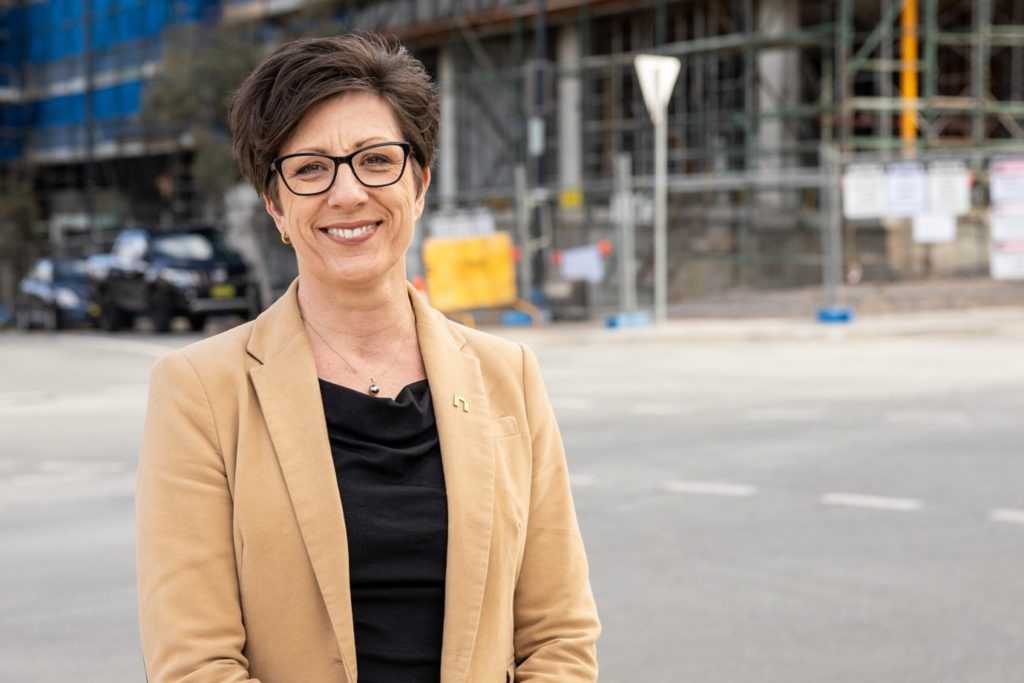Recently, a ‘Women’s Jobs Creation Forum’ was held by the Office for Women and the Minister for Women, Marise Payne. Women’s Agenda raised concerns about no media being present, as well as a limited agenda that failed to include important aspects to women’s jobs creation, like childcare.
Below, Kristine Scheul, the Chair of the National Association of Women in Construction shares more on what occurred on the day.
On 11 August 2020 I attended the virtual Women’s Job Creation Forum hosted by the Commonwealth Minister for Women.
The invitation to a forum to discuss job creation for women in the post COVID environment came at a time where the news of stimulus package cash splash on shovel or screwdriver ready projects was being described as “jobs for the boys”.
Having been invited in my capacity as Chair of the National Association of Women in Construction, I found myself repeating the same mantra I have had to repeat over and over again when I find myself listening to the industry complain about the skills shortage in the industry – the skills are there. You’re just not looking in the right places or at the right faces.
The aim of the forum was to identify ways to support and strengthen women’s workforce participation and contribution to the country’s economic recovery on the other side of COVID. The guest list reflected this with a truly diverse range of people from an equally diverse range of organisations and industries, all of whom had the sole aim of exploring ideas to create opportunities for women.
The day was split into two main panel discussions. With the first, it was unanimously agreed that this pandemic threatens to set women’s progress back exponentially. The second panel session then looked at how we could possibly take advantage of the altered employment landscape and what we need to draw on to affect positive change.
The indominable Libby Lyons started proceedings by reminding us that we had been on a positive trajectory of more jobs for women and moving towards pay equity before COVID. But with employers suffering “gender equality fatigue” and focus on competing for the stimulus dollar, issues of diversity, flexibility and equality have been sidelined, or at worst, shelved.
The first panel discussed opportunities to support and re-skill women into industries traditionally dominated by men, such as construction and mining, but as questions from the floor showed – there needs to be an appetite and cultural change in those industries to support the attraction and retention of women into those industries. It was also found that that support has to come primarily from government through their construction and infrastructure procurement policies which will make the creation of pathways for women into these industries more obvious than what we have today.
The discussion then continued about the ongoing support women will require in these industries where they are outnumbered 9:1 and highlighted how much work still needs to be done for women who have lost out as a result of the COVID shutdowns. By creating more obvious pathways into those industries that have benefitted from government stimulus spending like the construction industry, government and industry leaders could give effect to significant change.
One such suggestion was to support more organisations like the Placement Circle run by Mikaela Stafrace, whose mission is to assist women to become employment capable, by connecting peer supported communities of women and with the addition of vocational training.
The second panel session looked at how we could possibly take advantage of the altered employment landscape we are now in and what organisations and industries we need to draw on to affect positive change. The need for flexibility and support for women to enter and stay in the workforce has not changed but there need to be a willingness to explore innovative programs and practical solutions for how to implement more flexible and inclusive future-ready workforces which is the focus of organisations such as Beam – founded and run by women.
The panel then raised the question, if one of the fundamental lessons to come out of COVID is that flexibility works then how do we go about normalising flexible work arrangement for everyone?
In reality, people, and by that I mean women, have worked remotely and flexibly for a considerable amount of time out of necessity and out of practicality. But for the first time, we have found ourselves in a grand social experiment brought on by a pandemic where “working from home” is a necessity. For some, who were experiencing it for the first time, it has been a revelation–it works! It is possible to retain and maintain a flexible work force. It is possible to embrace work practices traditionally adopted by women and continue to be productive and it is possible to visualise that a rewarding career is compatible with a complicated life (cue toddler walking into shot in the middle of a zoom board meeting).
The question still remains however: how do we close the ‘flexibility gap’ (noting only 18 per cent of working men work part‑time, compared with 46 per cent of women), to make flexible arrangements work better for everyone and reduce the stigma that women working flexibly means they are not as productive as their “non-flexible” counterparts.
The forum did not produce a roadmap for the solution to the impact COVID has had on women but it did provide connections between women in leadership positions who can affect real change.
For industries like mine, who are benefitting from the stimulus packages, I have had the ability to throw some light on the many women in the industry who are ready, willing and in some case, uniquely equipped to work in this current environment.
It has also hopefully raised the awareness that industries such as construction and mining require a broad and diverse range of skills that are not all about hard hats and hammers and that illuminating the pathways to a career in those industries is the responsibility of both the public and private industry leaders.


